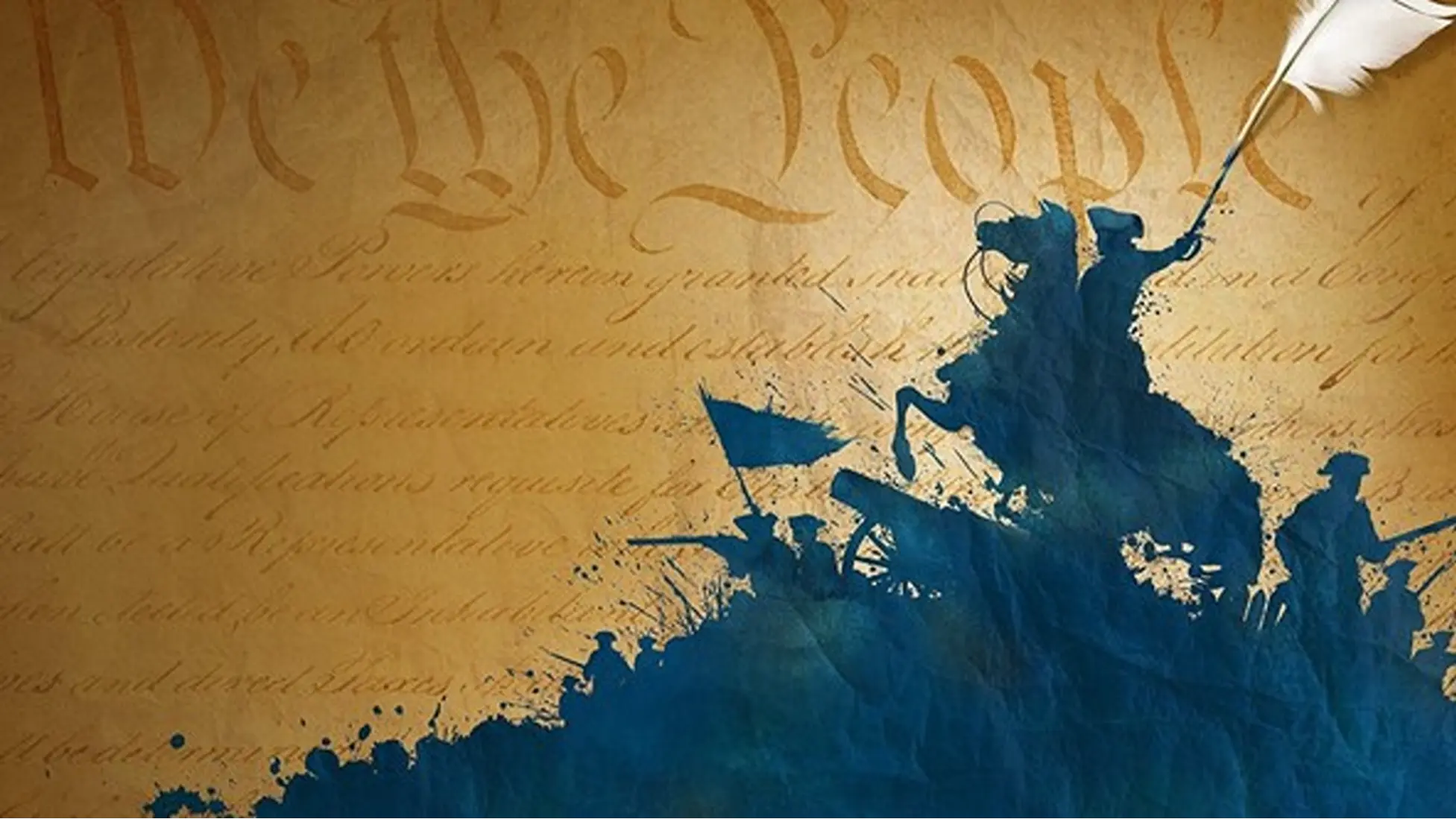The American Revolution season 1 episode 4 ending explained: Did losing Philadelphia help win the French alliance?
-
 Silhouettes of Continental soldiers surge in blue ink beneath the “We the People” parchment, promo art for The American Revolution. Image via PBS.
Silhouettes of Continental soldiers surge in blue ink beneath the “We the People” parchment, promo art for The American Revolution. Image via PBS.The American Revolution returns to the core question of strategy in Conquer by a Drawn Game and ends by tying a visible loss to a hidden win. The film is narrated by Peter Coyote and features an all-star voice cast that reads letters and dispatches to build the argument across 1777 and early 1778. The episode follows General Howe as he beats Washington at Brandywine and Germantown, takes Philadelphia, and forces Congress to scatter.
In the north, Burgoyne’s push from Canada slows, local fights harden, and Saratoga becomes the hinge that turns a rebellion into an international war. The coda points to February 1778, when French treaties bring official support, which is the payoff for Washington’s decision to keep the army alive through a miserable winter at Valley Forge.
The American Revolution frames the title phrase as the governing logic of the year. The army does not have to win set-piece battles. It has to survive until politics and diplomacy shift in its favor.
The American Revolution, season 1 episode 4 explained
The ending says yes, because the fall of Philadelphia and the survival of the Continental Army set the stage for the real victory at Saratoga and the diplomatic breakthrough that followed. The film places viewers in September and October 1777, when Washington’s forces are outflanked at Brandywine and then stumble in fog at Germantown.
The march into Philadelphia looks like a decisive British success. The narration then widens the lens and shows how Burgoyne’s long supply line, thin Loyalist backing, and defeats on the approach bleed his column until the twin battles at Freeman’s Farm and Bemis Heights end in surrender on October 17.
That surrender is the episode’s fulcrum. It convinces Paris that the American cause is viable and that British power can be checked. The American Revolution then closed in early February 1778, and the French treaties, treating the capital’s loss as the price paid to gain allies, ships, and money.
The episode explains its title by reaching back to the rhetoric that shaped morale. Ken Burns remarked,
“He understood the military thing that we could only conquer by a drawn game. That is to say, Washington didn’t have to win every battle. He just couldn’t surrender, he couldn’t lose.”
The film underscores that logic through Washington’s own caution. George Washington said,
“We should on all occasions avoid a general action or put anything to the risk unless compelled by a necessity into which we ought never to be drawn.”
This was read against the closing montage, and both lines tell the viewer how to read the loss of Philadelphia. Preserve the army. Trade towns for time. Let Saratoga do the talking in Paris.
Valley Forge seals the argument. The camera holds on cold huts, supply failures, and quiet discontent. The cut is blunt. The army that could not hold Philadelphia is the army that endures long enough to be retrained by von Steuben and kept alive by a changing coalition. The American Revolution uses that winter to show how a near-broken force becomes a drilled one, which is the practical outcome of the policy the title names. Survive first, reform second, then fight again when the war becomes multinational.
How the episode builds defeat into victory
The storytelling moves in a split screen. In the mid-Atlantic, Howe wins field engagements and occupies the capital. In the north, Burgoyne’s delays at places like Hubbardton and Bennington pull the thread from his campaign until Saratoga unravels it. The film cuts between these tracks to stress that a single season can hold both humiliation and leverage.
The American Revolution shows Franklin working salons as news of Saratoga reaches Paris, then lands on the February 1778 documents that formalize aid. The structure lets the ending feel earned without heroic inflation. The British hold a city. The Americans gain a navy. The viewer leaves understanding that the capital can fall while the cause rises. Burns reiterated,
“Washington only has to not lose because eventually, as Thomas Paine said, ‘We conquer by the drawn game.’”
What this ending sets up next
The final minutes prepare the viewer for a different war. The alliance forces Britain to defend a wider world and gives the Continental Army time to become something sturdier than a seasonal force. The next chapter will test whether training, supply, and French support can translate into campaigns that no longer depend on retreat and delay. The idea comes full circle in the text that lends the episode its name. As per the ushistory.org report dated December 1777, Thomas Paine stated in a letter to Lord Howe,
“By what means, may I ask, do you expect to conquer America?....You cannot be so insensible as not to see that we have two to one the advantage of you, because we conquer by a drawn game, and you lose by it.”
The American Revolution uses that sentence as a thesis for 1777 and early 1778. The army keeps breathing. The alliance arrives. The ending answers the question in plain terms. Losing one city helped win a partner that Britain could not easily beat.
Stay tuned for more updates.
TOPICS: The American Revolution episode 4, George Washington, Thomas Paine, America, The American Revolution episode 4 ending explained